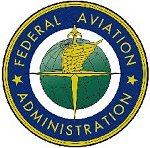 The National
Association of Flight Instructors (NAFI) is working to alter the
newly imposed flight restrictions in the Baltimore/Washington D.C.
area to allow the flight schools effected by the new security
restrictions to continue to operate in a safe and profitable
manner.
The National
Association of Flight Instructors (NAFI) is working to alter the
newly imposed flight restrictions in the Baltimore/Washington D.C.
area to allow the flight schools effected by the new security
restrictions to continue to operate in a safe and profitable
manner.
The restrictions, which went into effect February 10, creates an
Air Defense Identification Zone (ADIZ) within approximately a
30-mile radius around both cities. The new measures require that
general aviation pilots maintain two-way radio communication with
Approach Control, use a transponder and discrete beacon code, file
IFR/VFR flight plans on the ground, and follow standard air traffic
procedures for all operations.
NAFI and Experimental Aircraft Association (EAA) officials
participated in telephone conferences with senior Federal Aviation
Administration (FAA) and Transportation Security Administration
(TSA) officials over the weekend and met with the agencies on
Monday to explore ways to reduce the restrictions' negative impact.
During the Monday meeting, specific issues were addressed such as
the threat to safety posed to aircraft operating within the traffic
pattern at non-towered airports by the requirement to be in
constant two-way communications with ATC. The result is that
aircraft in the pattern are not monitoring and calling out their
position on the Unicom or CTAF frequencies, creating an inherently
unsafe situation and the severe threat of mid-air collision.
 TSA and FAA agreed to continue to work with NAFI
and EAA officials to make changes to the NOTAM that address the
safety concerns brought forth by NAFI.
TSA and FAA agreed to continue to work with NAFI
and EAA officials to make changes to the NOTAM that address the
safety concerns brought forth by NAFI.
"No one questions the need for additional security measures
during times of heightened alert," said NAFI President Sean Elliott
of the increased "Orange Alert" status announced last week. "The
NOTAM, however, has left pilots and local aviation officials unsure
as to what the restrictions actually mean and how to properly
comply. NAFI is working with pilots, flight instructors, the FAA
and TSA to reduce the multiple and contradictory instructions that
are resulting from this new procedure. Some of the new instructions
can creates real safety hazards in addition to the massive economic
impact these requirements are having on the general aviation and
flight training communities in that region."
There are nearly two dozen general aviation airports that are
immediately affected by the expanded restrictions. Flight schools,
Fixed Base Operators (FBOs) and other GA businesses in that area
are scrambling to get accurate information about the new rules.

Iwan Blom, chief pilot at Montgomery Aviation at Montgomery
County (MD) Airport, said the new restrictions are a severe blow to
flight training activities in the region. "Sandwiched between the
restricted zones in Washington and Camp David is little space to
safely operate and accomplish flight training, since dozens of
airplanes are trying to do the same thing," he said.
Other instructors in the area talked of receiving conflicting
interpretations from various FAA offices, which threaten to put
pilots and instructors in unsafe situations as well as create
uncertainty over whether they are violating the new
restrictions.
 Another
difficulty is the number of FAA Flight Service Stations that serve
the region, making pilots unsure whether flight plans they file at
one office will be forwarded to others in the area. That could
place a pilot and/or instructor in violation of the rules even
though they have followed all the proper procedures. EAA and NAFI
are working with Air Traffic Personnel to obtain clarification that
a round-robin flight plan may be used for flight training
operations.
Another
difficulty is the number of FAA Flight Service Stations that serve
the region, making pilots unsure whether flight plans they file at
one office will be forwarded to others in the area. That could
place a pilot and/or instructor in violation of the rules even
though they have followed all the proper procedures. EAA and NAFI
are working with Air Traffic Personnel to obtain clarification that
a round-robin flight plan may be used for flight training
operations.
"Baltimore, for instance, is asking that we file two flight
plans, one to depart the airspace and one to return after we have
accomplished our flight training," said Bob Gawler, a NAFI Master
Instructor and FAA Designated Pilot Examiner in the Washington,
D.C., area. "The problem is not knowing how much approach control
can handle as far as volume and getting significant delays in
activating the flight plan to get back in."
 ANN's Daily Aero-Term (05.01.24): Say Altitude
ANN's Daily Aero-Term (05.01.24): Say Altitude ANN's Daily Aero-Linx (05.01.24)
ANN's Daily Aero-Linx (05.01.24) Classic Aero-TV: Korean War Hero Twice Reborn
Classic Aero-TV: Korean War Hero Twice Reborn Airborne 04.29.24: EAA B-25 Rides, Textron 2024, G700 Deliveries
Airborne 04.29.24: EAA B-25 Rides, Textron 2024, G700 Deliveries Airborne Affordable Flyers 05.02.24: Bobby Bailey, SPRG Report Cards, Skydive!
Airborne Affordable Flyers 05.02.24: Bobby Bailey, SPRG Report Cards, Skydive!






